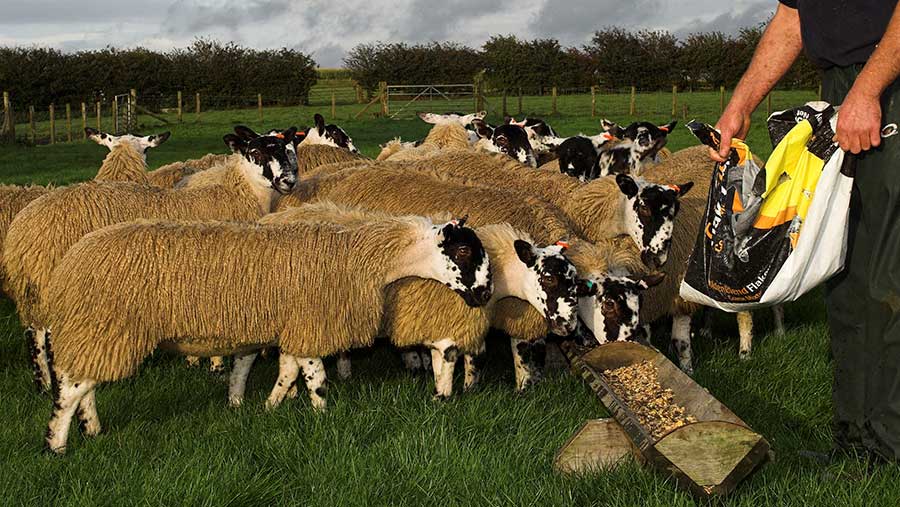Ewe lamb supplementation can pay dividends, research shows
 © Food And Drink/Shutterstock
© Food And Drink/Shutterstock Supplementary feeding of thin ewe lambs to optimise body condition score (BCS) pre-tupping could be cost-effective, emerging research on UK sheep performance suggests.
Lambs from ewe lambs recorded in the ongoing AHDB Challenge Sheep project varied by 5.2kg (the equivalent of £10.40 at £2/kg liveweight) depending on whether they were at optimal weight and BCS and scanning.
On average, ewe lambs that were at target produced eight-week weights of 20kg, compared with 14.8kg for lambs from ewe lambs that were BCS targets.
See also: Guide to breeding from ewe lambs
Below weight was defined as less than 60% of mature weight, while lacking condition was defined as at or below 2.75 BCS at tupping.
Addressing the Sheep Breeders Roundtable, independent beef and sheep consultant Liz Genever suggested four interventions that producers could take to prevent this which would cost less than £10.
- Select home-bred replacements at eight weeks of age and target them at preferential grazing to hit weight and BCS targets.
- Supplementary feeding from weaning to reach targets.
- Set weight targets for bought-in ewe lambs. Targets will be farm and breed dependent.
- Run underweight ewe lambs round and don’t tup them.
Cost-effective feeding
If lambs are thin or growing slowly in a challenging summer, giving them supplementary feed might be worthwhile, said Dr Genever.
“If you’ve got the quality grass, then you can do it very cost-effectively, but if, during the summer, you don’t have the grass, feeding could work out to be cost effective,” she told Farmers Weekly.
Feeding a >12.5MJ feed (85% dry matter) costing £180/t, to gain half a condition score over 100 days, would require feeding 4MJ daily. This would cost 1.7p/MJ or the equivalent of 6.8p/day. Over 100 days the total cost of feeding 400MJ would be £6.80 for 32kg of cake/head.
Theoretically, Ms Genever said, this would leave the breeder £3.40 better off after caking ewe lambs for three months.
New Zealand figures
Dr Genever highlighted New Zealand research which showed:
- Lamb survival decreases by 5% for every 0.5 BCS lost in four weeks before lambing and 5% for every 0.5 BCS below 3 at lambing.
- Ewes at BCS 3.5 at lambing produce twice as much colostrum.
- Lamb weaning weight decreases by 6% if more than 0.5 BCS is lost over the winter, 4% for every 0.5 BCS lost in four weeks before lambing and 6% for every 0.5 BCS below BCS 3 at lambing.
